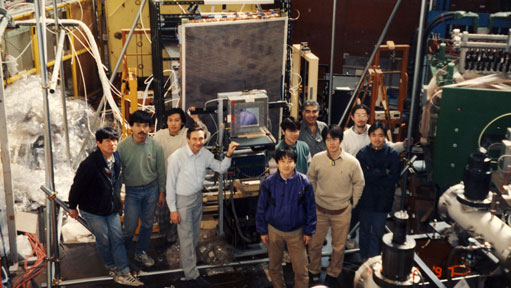George Mikenberg
13 July 2009 | By


Born Jorge in Argentina, George Mikenberg is a man of many aliases. He changed his name to the Hebrew Giora when he settled in Israel, but in English-speaking company, he encountered a problem: “The Anglo-Saxons cannot pronounce it, or rather they pronounce it in a way that means WC in Arabic.” And so he became George, but also Georg for the German-speaking, and Georges for his French-Swiss wife.
He is also a man of many nations, moving from Argentina to Nicaragua at the age of 14, as his father worked for the UN Food and Agriculture Organisation. In his teens, he worked as a fireman – staying at the station three times a week, where he’d study in relative safety with friends, “and every now and again put out a fire.”
Although his parents had dreams of young Jorge becoming a university student in the US, he had other plans. “I wanted to try a different experience,” says George, so he “ran away” to Israel and joined a kibbutz, an agricultural collective. A different experience it was: “I did all sorts of things, working in the fields, to work in the kitchen for a thousand people, to work in the chicken farm… You name it, I did it!” he laughs.
After six months of farm life, George was ready to continue his studies, attending the Hebrew University of Jerusalem. His parents moved on to the east African nation of Tanzania, and George spent summers with them. “We had a camp in the middle of the jungle,” he recalls.
When his father’s work called him back to South America, George rejoined his family in Chile, finishing his undergraduate degree at the Pontificia Universidad Católica, where he still has ties. Here, he met his first wife, Irene.
But for his masters and PhD, he returned to Israel, working at the Weizmann Institute where he has maintained affiliation for much of his career. He also committed himself to the nation as a citizen during his studies, serving the requisite six months in the military following his PhD.
His training as an army surveyor came in handy when moved on to Fermilab in the US. “I was working on the single arm spectrometer, in the meson lab, that was very badly aligned, so that knowledge helped me to get it right,” he explains. No doubt it also helped him understand nuances of alignment during his decade as Muon Spectrometer Project Leader in ATLAS, 1998-2008, as the various muon chambers were installed.
George and Irene made an effort to adapt to the language wherever they were, speaking English at Fermilab, German at DESY, and Hebrew at the Weizmann Institute. Irene helped Keren (36), four years old at the time they moved to Hamburg, to ease her way into the new language during the six months following the move. Their younger daughter, Dana (29), was born in Hamburg.
After the end of construction for the TASSO experiment, on DESY’s PETRA collider ring, the family moved to Israel. George began assembling a group of three Israeli institutions (Technion, Tel-Aviv Universtiy, and Weizmann) to collaborate with CERN, joining the OPAL collaboration at the planning stage and continuing through data collection and analysis. His life became split between Rehovot, Geneva, and Hamburg, and he learned French to communicate with CERN’s technical staff.
The Israeli team also developed the Thin Gap Chambers (TGCs) that would later make up a major fraction of the ATLAS muon End Cap Trigger system. During his long run as ATLAS Muon Project Leader, George practiced what he called “management by coffee.” Chambers for the muon spectrometer were provided by 30 or so different labs around the world, each with their own ideas on how to improve the design. So, George sat down with many a physicist, trying to find a compromise that would allow for some modifications and still result in a compatible system.
A believer in CERN as a promoter of peace, George was encouraged to see forty or so Pakistani and Israeli engineers work together to build the gigantic aluminium wheels on which the TGC chambers are mounted. “It is nice that when we’re talking about science, these cultural differences are not that important,” he notes. “They all felt very proud of what they have accomplished.”
For this and other reasons, George has been active in stepping up Israel’s involvement with CERN. He and Carlo Rubbia pushed to make Israel the first paying observer state, succeeding in 1991. Israel petitioned to become a full member state in 2008, and he was involved with the associated background documents.
His commitments in Germany, Switzerland, and Israel meant that George was away from his home in Rehovot for about 25 days per month. Although his marriage to Irene didn’t survive his frequent travels, George remains a romantic.
He met his current wife, Eliane, on a night train to visit his students in Hamburg. She is a medical doctor, based in Geneva although her tendency to travel ranks with his own. “And after we saw each other six times, she says she doesn’t want to hear from me anymore,” says George.
That was over seventeen years ago. “To be a physicist,” George begins, philosophical, “you have to not get frustrated by failures. Otherwise, you never get to anything.” So, he left roses on her doorstep, sent birthday gifts and flowers. And, ten years later, George finally received word from Eliane that she would see him again.
“So we’re happily married, for 84 months and 19 days,” he said on May 22nd, still keeping close count after seven years. “We try to celebrate every month.”
Speaking of celebrations, wish George a happy birthday on Wednesday.



